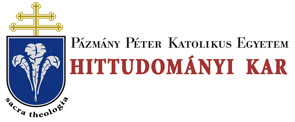Folia Canonica 10. (2007)
PROCEEDINGS OF THE INTERNATIONAL CONFERENCE - Szabolcs Anzelm Szuromi: Development of the Clerical Duties and Rights Based on the 11th-12th Centuries. Canonical Collections
210 SZABOLCS ANZELM SZUROMI very first section as quotation of the apostolic canons, could make further effect on the capitularies of the secular ruler. Much later, the Decretum Burchardi Wormatiensis (between 1008 and 1022) got a distinguished importance, especially in the Low countries.18 Burchard summarized the discipline of the provincial councils and he used various penitential collections for his work. The Decretum Burchardi deals with the clerical duties and rights in different books, namely De primatu Ecclesiae (1.75, 78,210)19; De sacris ordinibus (IL 67-68,20 1 17-1 19,21 136,22 1 8 923 24); De ecclesiae (III. 109)u\ De sacrameto baptismatis et confirmationis (IV. 22-23)25; De sacramento Corporis et Sanguinis Domini (V. 6, 8)26; De excommunicatione (XI. 35)27; and De crapula et ebrietate (XIV. 5-6).28 Book 2 deals particularly with the different degrees of the Holy Order, with the title: “De ordinationibus presbyterorum et reliquorum ordinum.” Among the very first canons of Book 2 we can read a list which contains the necessary books to be known by priests: sacramentary, lectionary, antiphonary, penitential book, psaltery, book of homilies for Sundays of the year and for other feasts (can. 2).29 From the structure and the basic themes of Book 2 we can set up a general overview on the clerical duties and rights in the early 11th century. The first canons explain those qualities which make it possible to ordain a particular faithful (cc. 1-49).30 The next section is about obligations of the ordained persons: based on canon 50 for the licit celebration of the Holy Mass the priest has to 18 Cf. HOFFMANN, H.—Pokorny, R., Das Dekret des Bischofs Burchard von Worms. Textstufen-Frühe Verbreitung- Vorlagen, (MGH Hilfsmittel 12), München 1991. Will, L., Die Rechtsverhältnisse zwischen Bischof und Klerus im Dekret des Bischofs Burchard von Worms. Eine kanonistische Untersuchung (Forschungen zur Kirchenrechtswissenschaft 12), Würzburg 1992. 19 Fransen, G.-Kölzer, Th. (Hrsg.), Burchard von Worms, 9rb, lOra, 29rb. 20Fransen, G.-Kölzer, Th. (Hrsg.), Burchard von Worms, 4Ira. 21 Fransen, G.-Kölzer, Th. (Hrsg.), Burchard von Worms, 45ra. 22 Fransen, G.-KÖLZER, Th. (Hrsg.), Burchard von Worms, 45vb. 23 Fransen, G.-Kölzer, Th. (Hrsg.), Burchard von Worms, 50ra. 24 Fransen, G.-Kölzer, Th. (Hrsg.), Burchard von Worms, 67ra. 25 Fransen, G.-Kölzer, Th. (Hrsg.), Burchard von Worms, 84va-84vb. 26 Fransen, G.-Kölzer, Th. (Hrsg.), Burchard von Worms, 95va. 27 Fransen, G.-Kölzer, Th. (Hrsg.), Burchard von Worms, 149vb. 28 FRANSEN, G.-Kölzer, Th. (Hrsg.), Burchard von Worms, 163rb. 29 BW 2. 2: Quae ipsis sacerdotibus necessaria sint ad discendum, id est, liber sacramentorum, lectionarius, antiphonarius, baptisterium, computus, Canon poenitentialis, Psalterium, Homeliae per circulum anni dominicis diebus et singulis festivitatibus aptae. Ex quibus omnibus si unum defuerit, sacerdotis nomen vix in eo constabit, quia valde periculosae sunt evan- gelicae minae quibus dicitur: Si caecus caeco ducatum praestet, ambo in foveam ca- dunt.FRANSEN, G.-KÖLZER, Th. (Hrsg.), Burchard von Worms, 35rb. 30 Fransen, G.-Kölzer, Th. (Hrsg.), Burchard von Worms, 35ra-39rb.
